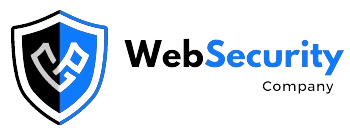Navigating the World of Cybersecurity Frameworks: A Guide to Choosing the Right Approach
In today’s digital age, cybersecurity has become a top priority for businesses of all sizes. With the increasing number of cyber threats and attacks, it is more important than ever for organizations to have a solid cybersecurity framework in place to protect their sensitive data and systems. However, with so many different frameworks and standards to choose from, selecting the right approach can be a daunting task. In this article, we will provide a guide to help organizations navigate the world of cybersecurity frameworks and choose the right approach for their specific needs.
Understand Your Organization’s Needs and Risks
The first step in selecting a cybersecurity framework is to understand your organization’s specific needs and risks. This includes identifying the type of data you need to protect, the potential threats you face, and the compliance requirements you must meet. By conducting a comprehensive risk assessment, you can gain a better understanding of your cybersecurity needs and priorities, which will help you choose the most appropriate framework.
Consider Industry Standards and Best Practices
When selecting a cybersecurity framework, it is important to consider industry standards and best practices. There are several widely recognized frameworks that have been developed by government agencies, industry organizations, and cybersecurity experts. Some of the most popular frameworks include the NIST Cybersecurity Framework, ISO/IEC 27001, and the CIS Controls. These frameworks provide a set of guidelines and controls that organizations can use to enhance their cybersecurity posture and reduce their risk of a cyber-attack.
Evaluate the Framework’s Fit with Your Organization
Once you have identified your organization’s needs and considered industry standards and best practices, the next step is to evaluate how well a specific cybersecurity framework aligns with your organization’s goals and objectives. Consider factors such as the complexity of the framework, the resources and expertise required to implement it, and the level of support available from the framework’s community. Choose a framework that is scalable, flexible, and can be tailored to meet your organization’s unique cybersecurity requirements.
Seek Input from Stakeholders and Experts
When selecting a cybersecurity framework, it is important to seek input from key stakeholders within your organization, including IT professionals, security experts, and senior leadership. By involving a diverse group of stakeholders in the decision-making process, you can gather different perspectives and ensure that the chosen framework meets the needs of all relevant parties. In addition, consider seeking guidance from external cybersecurity experts or consultants who can provide valuable insights and recommendations based on their industry knowledge and experience.
Regularly Review and Update Your Cybersecurity Framework
After selecting a cybersecurity framework, it is important to regularly review and update it to ensure that it remains effective and relevant to your organization’s evolving security needs. Cyber threats and attacks are constantly evolving, so it is crucial to stay informed about the latest trends and best practices in cybersecurity. Conduct regular audits and assessments to identify any weaknesses or gaps in your cybersecurity framework and take proactive measures to address them.
In conclusion, navigating the world of cybersecurity frameworks can be a complex and challenging task. By following the guidelines outlined in this article and carefully evaluating your organization’s needs, considering industry standards and best practices, seeking input from stakeholders and experts, and regularly reviewing and updating your cybersecurity framework, you can choose the right approach to protect your organization from cyber threats and attacks. Remember that cybersecurity is an ongoing process, and by taking a proactive and strategic approach to cybersecurity, you can better safeguard your organization’s sensitive data and systems.





